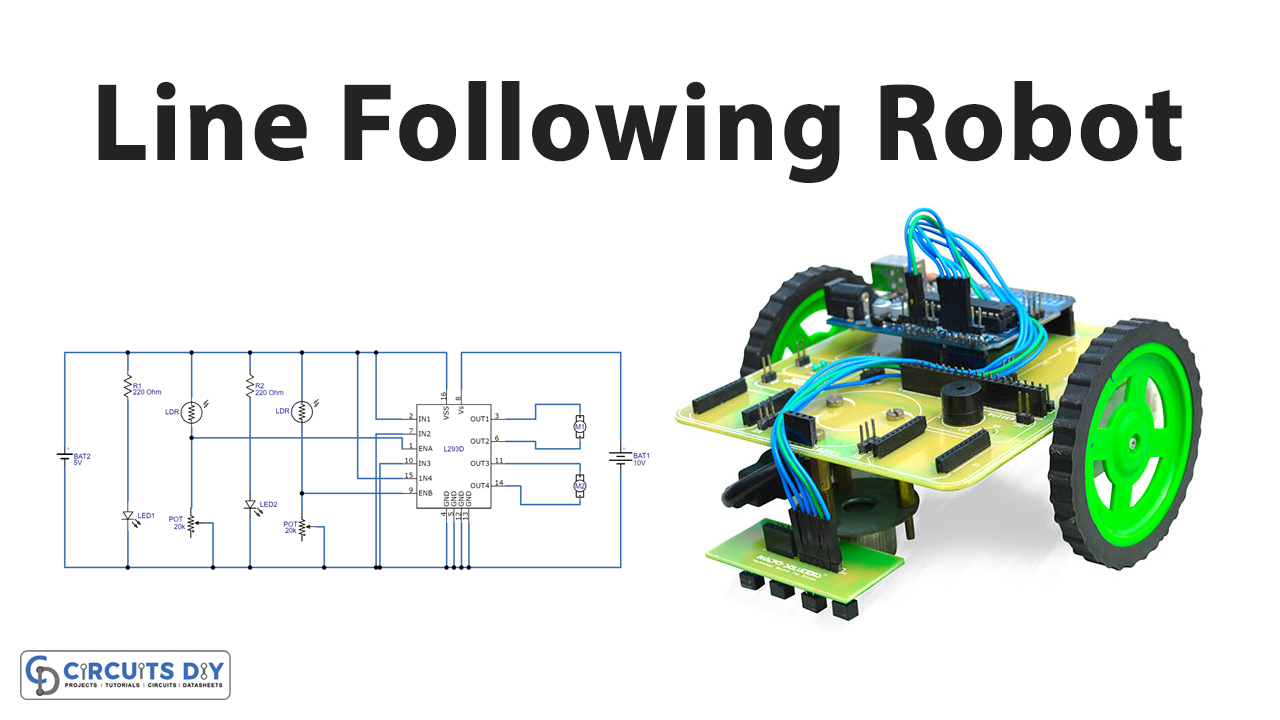Introduction
Line following robots is so common nowadays. Basically, these are the robots that follow or run on a certain line track of black color. On the industrial level, these robots have so many practical applications. For instance, they can easily perform the material handling process. Also, this robot can be an impressive vehicle to transport goods from one place to another, hence saving time. We can make this kind of robot in different ways. It can be built by using microcontrollers and IR. However, not everyone understands and performs programming. In that case, we are here to make this robot without programming. So, in this tutorial, we are going to “Line following robot using L293D”
Hardware Required
| S.no | Component | Value | Qty |
|---|---|---|---|
| 1. | Motor Driver IC | L293D | 1 |
| 2. | DC motors | 200 rpm | 2 |
| 3. | LDR | – | 2 |
| 4. | Battery | 5V | 1 |
| 5. | Battery | 10V | 1 |
| 6. | LED | – | 2 |
| 7. | Variable Resistor | 20K | 2 |
| 8. | Resistor | 220Ω | 2 |
Circuit Diagram

Working Explanation
For this project, first, you need to draw the black line track. Now, In this Line following the robot using L293D, we have connected two motors named M1 and M2. Thus these two motors are working as left side and right side motors, respectively. L293D IC controls the rotation of these motors. The enable pins (pin 1 and 9) of an IC are connected with the LDR. We all know the working of LDR. When there is no light falls on it, the current flows through the circuit. In other words, you can say that LDR circuits work in the dark. Thus, this robot easily follows the black light (dark). So, when the light falls on LDR gets varied, the wired motors change their direction. As a result, the robot continuously follows the line track.
Application and Uses
- Industrial robots.
- Domestic purposes.
- Automobile applications, etc.


